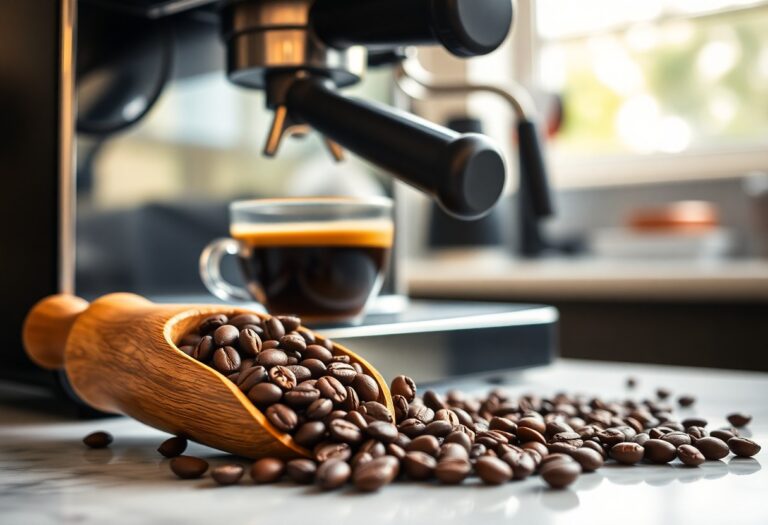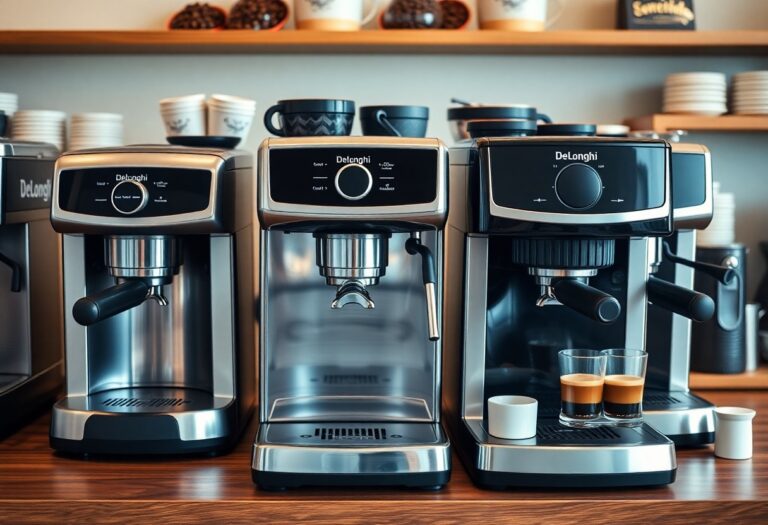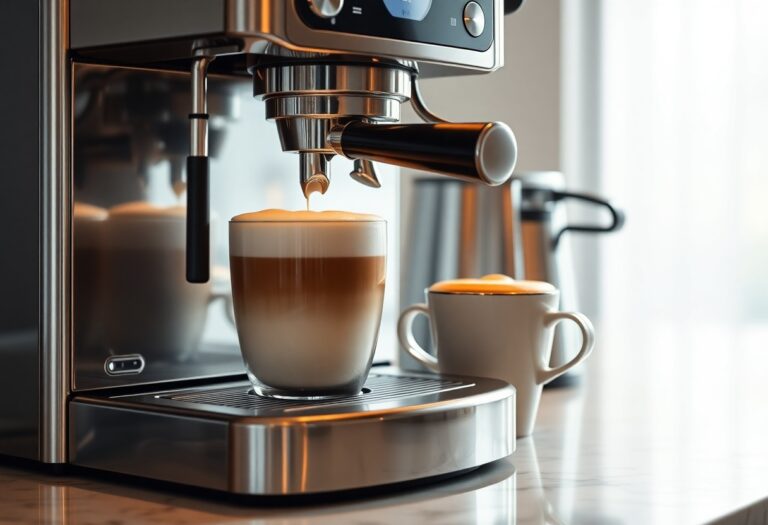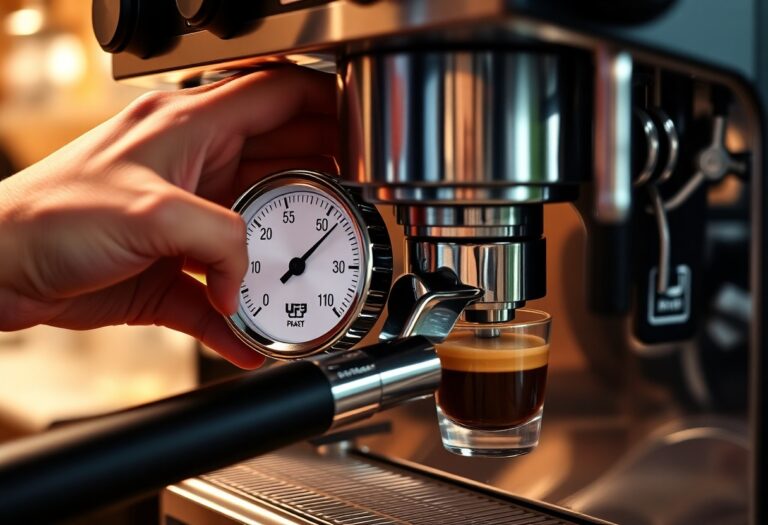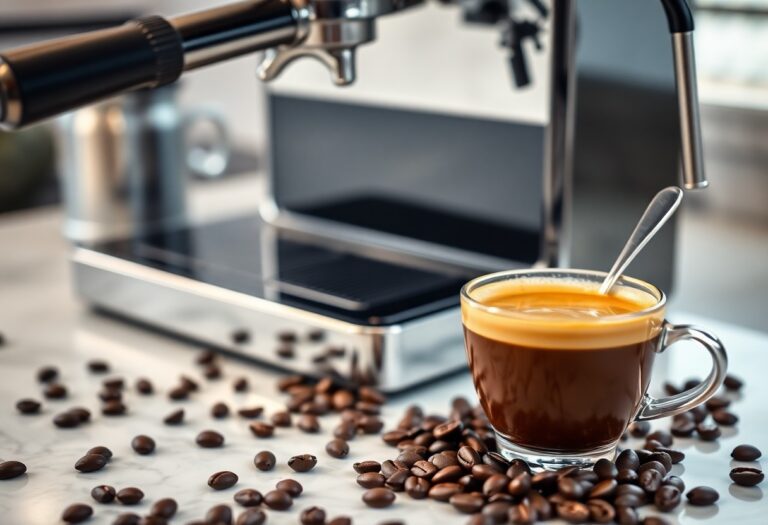How to Make Coffee with an Espresso Machine: Brewing Guide
Welcome to the ultimate brewing guide on how to make coffee with an espresso machine. This comprehensive article will walk you through the essential steps and techniques to brew a perfect cup of espresso at home.
With the right equipment, precise technique, and attention to detail, you can indulge in the rich flavors of freshly brewed coffee right from your own espresso machine. Let’s dive into the world of espresso brewing!
Essential Equipment for Brewing Espresso at Home
Brewing espresso at home requires a set of essential tools designed to work together to extract rich, flavorful coffee. Investing in quality equipment directly impacts the taste and consistency of your espresso shots, which you can find at Essential Coffee Co.
Key pieces of equipment include:
- Espresso Machine: The heart of your setup. It forces hot water through finely-ground coffee under pressure, creating that signature espresso crema and intense flavor.
- Grinder: Freshly ground coffee is crucial. A burr grinder allows you to control grind size precisely, which affects extraction rate and taste.
- Portafilter: Holds the coffee grounds tightly during brewing. A well-fitted portafilter distributes pressure evenly for uniform extraction.
- Coffee Scale: Measures exact doses of coffee and water, ensuring consistent brew ratios every time.
- Tamper: Compresses the coffee grounds in the portafilter evenly, preventing channeling where water finds weak spots and under-extracts the coffee.
Each tool plays a specific role: the grinder controls particle size, the tamper shapes the coffee puck for even flow, and the espresso machine applies pressure and heat to extract flavors. Skimping on any piece can lead to inconsistent shots or subpar flavor. Precision gear supports precise technique—both are essential for mastering espresso at home. For a more comprehensive understanding of how these tools work together, check out this espresso brewing guide.
Choosing the Right Coffee Beans and Grind Size
The foundation of great espresso starts with freshly roasted beans. Beans that have been roasted within the last two weeks retain essential oils and aromatic compounds, crucial for a rich, flavorful shot. Buying whole beans and grinding them just before brewing preserves these qualities better than pre-ground coffee.
Grind size plays a critical role in espresso extraction. For espresso machines, you need a fine grind, finer than drip coffee but not so powdery that it clogs the machine. This fine grind allows water to flow through the coffee puck at the right resistance, extracting balanced flavors without bitterness or sourness. If your shot pulls too quickly, try a finer grind; if it drags or tastes bitter, coarsen it slightly.
Determining the right amount of coffee depends on your portafilter size and personal taste preferences. Most home espresso machines use between 18 to 20 grams of coffee for a double shot. Start with your machine’s recommended dose and adjust incrementally by 0.5 grams until you achieve the desired strength and flavor profile.
Tips for Perfecting Your Espresso
- Use a quality burr grinder for consistent particle size.
- Measure your coffee dose precisely with a scale.
- Experiment within small ranges to dial in your perfect shot.
Mastering bean freshness, grind size, and amount ensures your espresso extraction is optimized for flavor extraction and a satisfying crema layer on top.
Mastering the Art of Tamping and Brewing with an Espresso Machine
To make the perfect cup of espresso, you need to master two essential skills: tamping and brewing. In this guide, we’ll walk you through the techniques and parameters that will help you achieve a delicious shot every time.
The Importance of Tamping
Tamping is the process of compressing the coffee grounds in the portafilter to create an even surface for extraction. This step is crucial because unevenly packed coffee can result in uneven extraction, leading to a bitter or sour taste.
Step-by-Step Guide to Tamping
- Start with Freshly Ground Coffee: Use a burr grinder to grind your coffee beans just before brewing for maximum freshness.
- Fill the Portafilter: Add the desired amount of coffee grounds to the portafilter basket, making sure not to overfill.
- Distribute the Grounds: Use your finger or a distribution tool to evenly distribute the coffee grounds in the basket.
- Apply Even Pressure: Hold the portafilter on a flat surface and use a tamper to apply firm and even pressure on the coffee puck. Aim for about 30 pounds of pressure.
- Check for Levelness: Remove the tamper and inspect the coffee puck from the side. It should be level and smooth without any cracks or gaps.
Understanding Brewing Parameters
Once you’ve mastered tamping, it’s time to focus on brewing. Several key parameters influence the extraction process and ultimately affect the flavor of your espresso.
Key Brewing Parameters
- Water Temperature: The ideal water temperature for brewing espresso is between 195°F and 205°F (90°C – 96°C). Use a thermometer or an espresso machine with built-in temperature control to ensure accuracy.
- Brew Ratio: The brew ratio refers to the amount of coffee used compared to the amount of water. A common starting point is 1:2, meaning for every gram of coffee, you’ll use 2 grams of water. Adjust this ratio according to your taste preferences.
- Brew Time: Brew time is how long it takes for water to pass through the coffee grounds during extraction. Generally, aim for a brew time between 25-30 seconds for a standard double shot.
By mastering these tamping techniques and understanding key brewing parameters, you’ll be well on your way to making delicious coffee with an espresso machine!
Troubleshooting Common Issues When Brewing Espresso at Home
Monitoring the flow rate during extraction is critical for achieving balanced flavors in your espresso. The flow rate refers to how quickly water passes through the coffee puck. Ideally, you want a steady, even flow that lasts about 25-30 seconds for a standard shot. If the flow is too fast, under-extraction occurs, resulting in sour and weak coffee. Too slow, and over-extraction leads to bitterness and harshness.
Key signs to watch for in flow rate monitoring:
- Sudden spurts or drips instead of a smooth stream indicate uneven pressure.
- A very thin, slow drip suggests channeling or tamping issues.
- Rapid flooding through the puck points to coarse grind or insufficient tamping.
Channeling prevention avoids uneven shots caused by water finding paths of least resistance through the coffee bed. Channeling leads to some areas being over-extracted while others remain under-extracted.
Effective strategies to prevent channeling:
- Even tamp pressure: Apply consistent pressure across the puck surface to create uniform density.
- Proper distribution: Before tamping, use tools or techniques like the Weiss Distribution Technique (WDT) to break up clumps and level grounds.
- Correct grind size: Too coarse or inconsistent grind particles can create gaps for water to bypass.
- Check machine maintenance: Clean group heads and baskets regularly to ensure optimal water dispersion.
Mastering flow rate monitoring and channeling prevention improves shot quality dramatically, making troubleshooting a valuable skill in your espresso brewing journey.
Exploring Different Ways to Enjoy Espresso Coffee
Espresso is a versatile coffee that can be enjoyed in various ways. Whether you prefer it straight or with milk, there are plenty of options to suit your taste. Here are some popular serving options for espresso:
Straight Shots
- Single Shot: The purest form of espresso, a single shot of concentrated coffee.
- Ristretto: A shorter and more intense version of espresso made with less water.
- Doppio: A double shot of espresso for those needing an extra kick.
Milk-Based Drinks
- Espresso Macchiato: Espresso “stained” with a small amount of milk foam.
- Café Americano: Espresso diluted with hot water for a milder flavor.
- Cappuccino: Equal parts espresso, steamed milk, and milk foam for a creamy texture.
- Latte: A milky coffee made with espresso and steamed milk, topped with a thin layer of foam.
- Mocha: A decadent drink combining espresso, steamed milk, and chocolate syrup.
Embrace the versatility of espresso by exploring these different serving options. Each variation offers a unique flavor profile and experience, catering to different preferences and occasions. Experiment with milk-based drinks like lattes and cappuccinos to discover your favorite way to enjoy the rich flavors of espresso.
Additional Tips for Consistent Results in Home Espresso Brewing
Benefits of Cup Warmers:
Maintain Optimal Serving Temperature: Cup warmers help keep your espresso cups warm, which is essential for preserving the temperature of your freshly brewed espresso. Warm cups ensure that the coffee’s flavor profile remains intact and enhances the overall drinking experience.
Importance of Consistency:
Technique and Practice: Consistency in tamping, brewing parameters, and overall technique is key to achieving exceptional results when making espresso at home. Regular practice and attention to detail will help you refine your skills and produce consistently delicious shots of espresso.
FAQs (Frequently Asked Questions)
What essential equipment do I need to brew espresso at home?
To brew espresso at home, you need an espresso machine, a quality grinder, a portafilter, a coffee scale, and a tamper. Investing in quality equipment is important to achieve better results and enhance your brewing experience.
How do I choose the right coffee beans and grind size for espresso?
Using freshly roasted whole beans is crucial for optimal flavor. The grind size significantly affects extraction and taste; finer grinds are typically used for espresso. It’s important to adjust the amount of coffee based on your machine and personal preference to achieve the best results.
What is the proper tamping technique when making espresso?
Tamping involves pressing the coffee grounds evenly into the portafilter to create a uniform puck. This ensures consistent water flow during extraction. Proper tamping combined with controlling brewing parameters like water temperature, brew ratio, and brew time leads to balanced and flavorful espresso shots.
How can I troubleshoot common issues like uneven extraction or channeling?
Monitoring the flow rate during extraction helps maintain balanced flavors. To prevent channeling—a problem causing uneven shots—ensure even tamping, use the correct grind size, and maintain clean equipment. Adjusting these factors will improve shot consistency.
What are some popular ways to enjoy espresso coffee at home?
Espresso can be enjoyed as straight shots or used as a base for milk-based drinks such as lattes and cappuccinos. Experimenting with different serving options allows you to explore various flavors and textures according to your taste preferences.
How can I achieve consistent results when brewing espresso at home?
Consistency comes from practicing proper technique and maintaining your equipment. Utilizing accessories like cup warmers helps maintain optimal serving temperature. Paying attention to details in each step—from grinding to tamping—ensures you brew great espresso every time.


